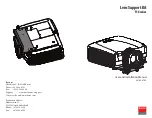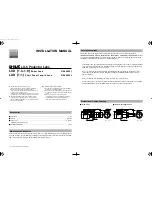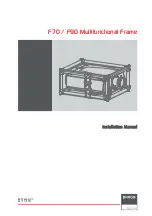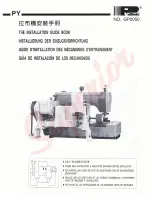
3
UK
• Maintenance intervals are application-specific and therefore need to be defined by the
operator depending on the operating conditions.
• During maintenance, especially those parts on which the type of protection depends need
to be examined (e.g. integrity of the components of the cable gland, of the seals).
Special conditions for safe operation
• For units with terminal chamber (cable gland) and cable units a sufficient strain relief must
be ensured or the cable must be firmly laid.
• Do not disconnect the cables from units with terminal chamber while live.
• The housing and housing parts made of plastic were tested in accordance with IEC 60079-
0 for group II and for a low mechanical risk with an impact energy of 4 joules.
• Avoid direct radiation with high UV components (sunlight). Mount the unit in a protected
place.
• Units of the type ID must be mounted on a flat surface and the entire bottom must lie
flat on the surface. When mounted with the ifm mounting sets E11121 or E11122, these
requirements are met.
• A fuse must be connected between the current source and the unit. Observe the following
conditions:
- The fuse must have a rated current of max. 40 mA / time-lag in accordance with EN
60127-2.
- The fuse must be located outside the hazardous areas.
- Make sure that for 3-wire circuits the current consumption of the sensor flows through
the fuse. The possible load current is thus reduced by the current consumption.
- Insert the fuse in the specified electric circuit (see the following wiring diagrams).






















